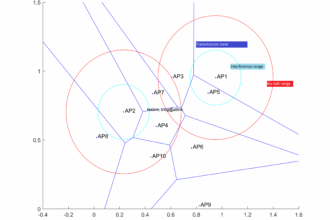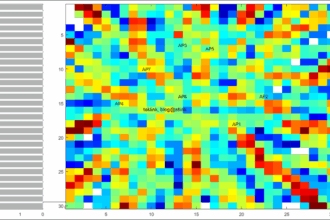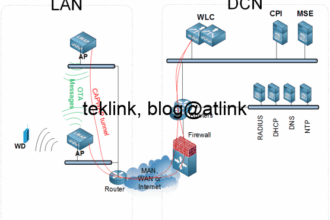Dynamic Radio Resource Management helps overcome interferences in dense WLAN deployments. By processing data from upper-layers services, it could optimize and enrich end-to-end wireless client experience. This experience may be tight (related) to a transmit opportunity function that hints on the radio interface condition, and effectiveness of the transmission itself from different points of view: application, service and underlying network infrastructure.
The transmit opportunity calculations
The transmit opportunity calculations that are done at WLAN central intelligence level (such WLC, Wireless LAN Controller) are resource consuming due to the processing of huge amount of raw data from lower and upper system layers (Physical, Logical, more functional layers relying on services and applications).
One major part of this processing is the establishment of a coverage map that indicates in real-time and at any point of the coverage area the quality of a radio transmission such as to hint on the opportunity to transmit at this point.
What this work is about
This work: A NURBS Based Technique for an Optimized Transmit Opportunity Map Processing in WLAN Networks, helps optimize transmit opportunity map calculations by exploring a novel approach based on NURBS Bézier surface calculation technique. It demonstrates that the time required for coverage map processing and changes to radio environment could be drastically enhanced. Here’s the link the the complete article: A NURBS Based Technique for an Optimized Transmit Opportunity Map Processing in WLAN Networks
Our model compares to legacy ones: predictive and experimental methods of radio coverage calculations. The idea of our solution is based on facts that arise from the usage of NURBS surface principales: the fact that the control points used in this context, are special set of coverage area points that do influence radio characteristics, the weighting of these control points allows impact classification for a specific measurement or at an upper-layer, control over the transmit opportunity, finallay, knots that can be tight the the accuracy of our calculations in this way: the more knots we work with and their distribution, the more accurate is our processing of the environment attributes…
Our solution idea
Our solution implementation is based on two algorithms: the NTO-CP and the NTO-CH. Int the first algorithm the objective is to calculate the transmit opportunity at every coverage area point and at the same time, reduce the number of control points and still obtain the same results, optimize knots number. The objective of the second algorithm is to hint on how a change may affect a coverage zone, multiple zones or the entire network. It is done by scoping the change impact so that only pertaining set’s control points are processed to reflect the new change.
As a summary
As a conclusion, our solution showed a better result that both other solutions when the number of mobility devices is almost greater than 10% of the number of the distribution points. Our solution performs better than barycenter-based one when the number of the control points is roughly four times the number of mobility devices.






One Comment